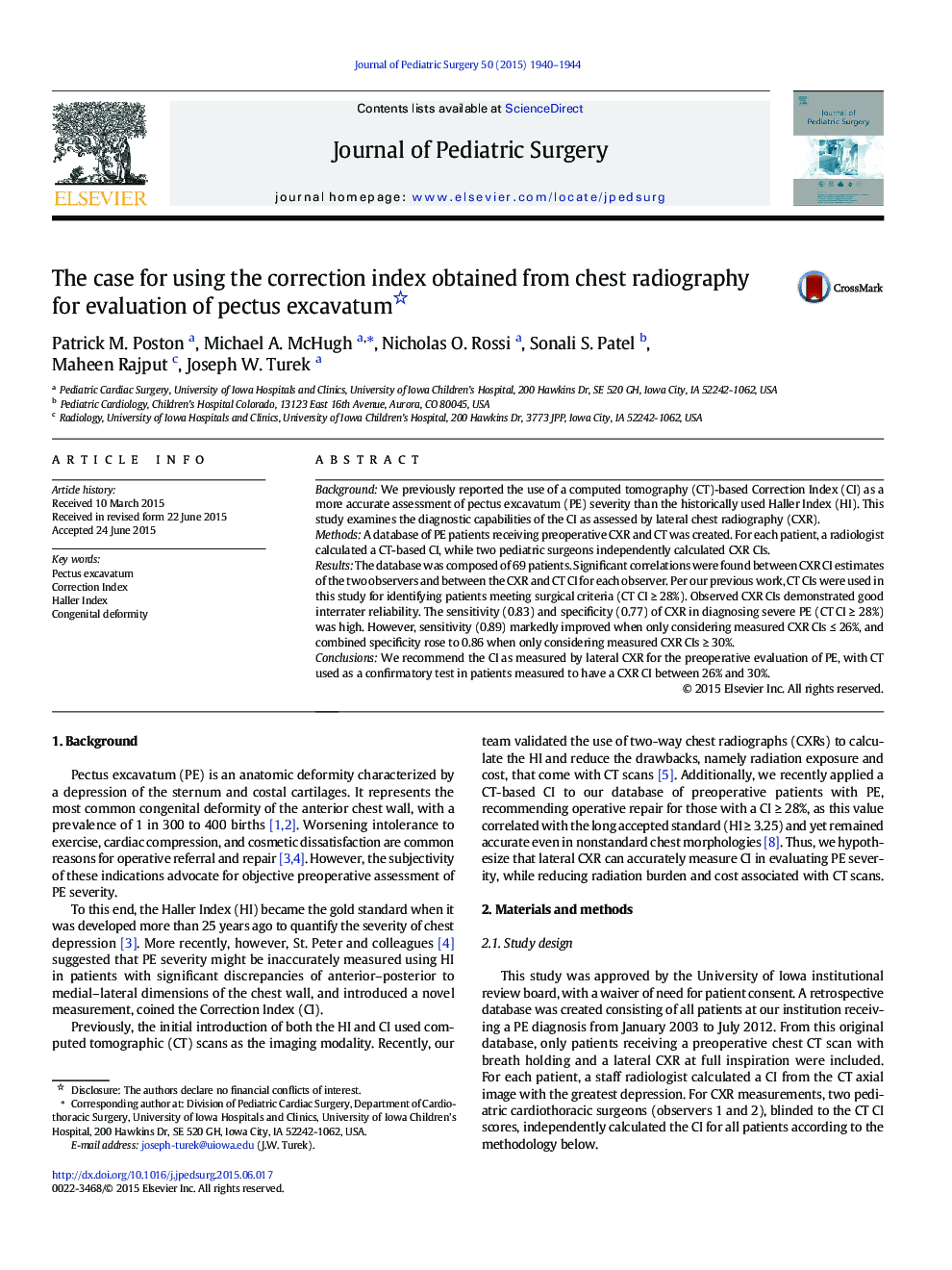| Article ID | Journal | Published Year | Pages | File Type |
|---|---|---|---|---|
| 4155109 | Journal of Pediatric Surgery | 2015 | 5 Pages |
BackgroundWe previously reported the use of a computed tomography (CT)-based Correction Index (CI) as a more accurate assessment of pectus excavatum (PE) severity than the historically used Haller Index (HI). This study examines the diagnostic capabilities of the CI as assessed by lateral chest radiography (CXR).MethodsA database of PE patients receiving preoperative CXR and CT was created. For each patient, a radiologist calculated a CT-based CI, while two pediatric surgeons independently calculated CXR CIs.ResultsThe database was composed of 69 patients. Significant correlations were found between CXR CI estimates of the two observers and between the CXR and CT CI for each observer. Per our previous work, CT CIs were used in this study for identifying patients meeting surgical criteria (CT CI ≥ 28%). Observed CXR CIs demonstrated good interrater reliability. The sensitivity (0.83) and specificity (0.77) of CXR in diagnosing severe PE (CT CI ≥ 28%) was high. However, sensitivity (0.89) markedly improved when only considering measured CXR CIs ≤ 26%, and combined specificity rose to 0.86 when only considering measured CXR CIs ≥ 30%.ConclusionsWe recommend the CI as measured by lateral CXR for the preoperative evaluation of PE, with CT used as a confirmatory test in patients measured to have a CXR CI between 26% and 30%.
